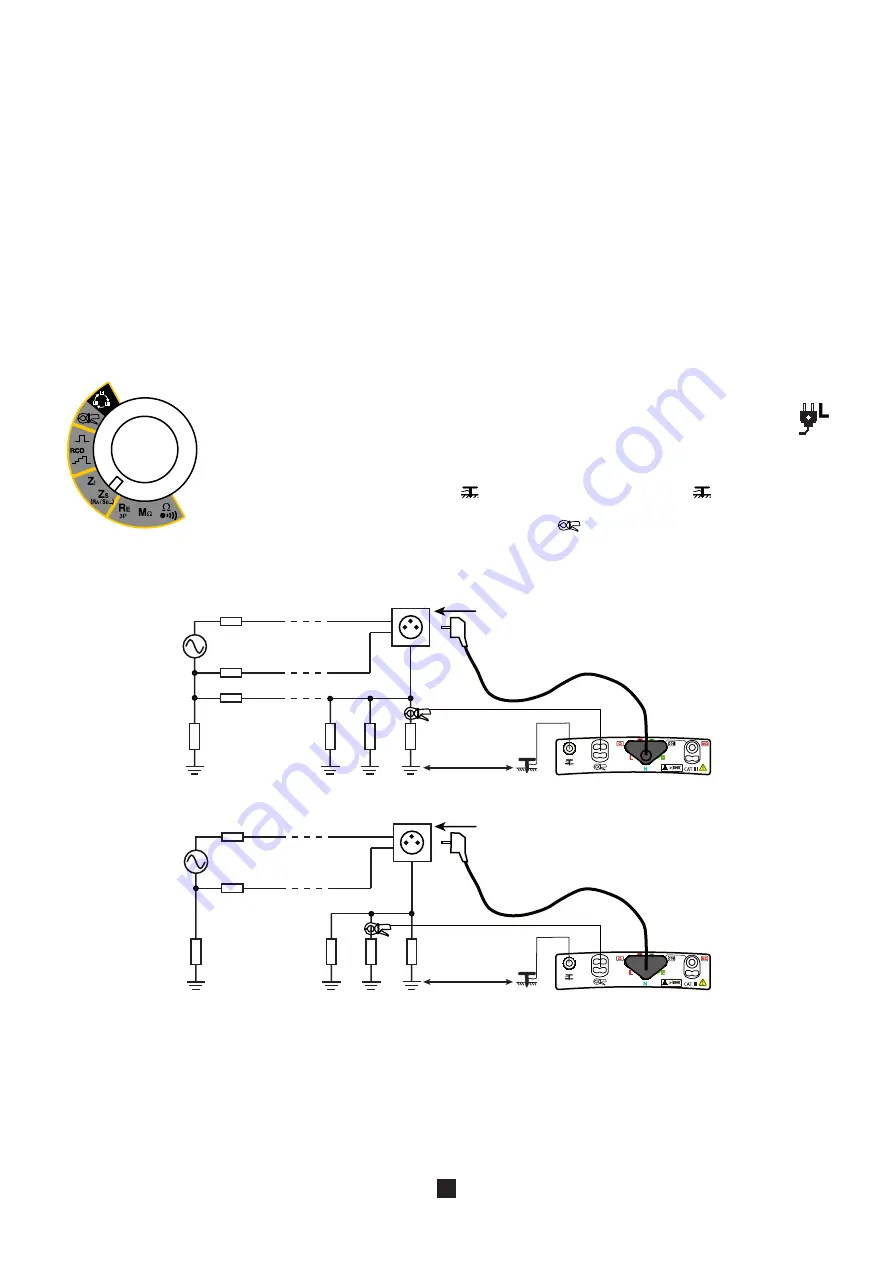
35
3.9. SELECTIVE EARTH MEASUREMENT ON LIVE CIRCUIT
This function is used to make an earth measurement and to select one earth from among others, in parallel, and measure it. It
requires the use of an optional current clamp. The C177 and MN77 clamps are better suited to these measurements because
they are ten times as sensitive as the C177A clamp.
3.9.1. DESCRIPTION OF THE MEASUREMENT PRINCIPLE
The device starts by making a loop measurement Z
S
between L and PE (see §3.6) with a high current, and therefore with a risk of
tripping out the installation. This high current must be used to ensure that the current flowing in the clamp is large enough to be
measured. The device then measures the current flowing in the circuit surrounded by the clamp. Finally, it measures the potential
of the PE conductor with respect to the auxiliary rod and from it deduces R
ASEL
= U
PI-PE
/ I
SEL
, I
SEL
being the current measured by
the clamp.
3.9.2. MAKING A MEASUREMENT
Set the switch to Z
S
(R
A
/S
EL.
).
SET UP
OFF
Plant the auxiliary rod at a distance of more than 25 metres from the earth electrode
and connect it to the
(R
A
S
EL
) terminal of the device. The
symbol is then dis-
played.
Connect the clamp to the device; the
symbol is displayed. Then place it on the
earth circuit to be measured.
Connect the measuring cable to the device, then to the socket outlet of the instal-
lation to be tested.
Case of a TN installation
Case of a TT installation
L
PE
N
Rb
R
E
R
N
R
L
PE
Ra3
> 25 m
Ra2
Ra1
L
PE
N
Rb
R
N
R
L
> 25 m
Ra3
Ra2
Ra1
At the time of connection, the device detects the positions of the phase (L)
and of neutral (N) with respect to the protective conductor (PE) and displays
them. If necessary, it then automatically switches the L and N terminals so
that the measurement can be made without modifying the connections of
the terminals of the device.
For a more accurate measurement, you can choose a high current (TRIP mode), but the RCD that protects the installation may trip.
The alarm, if activated, serves to inform the user, by an audible signal, that the measurement is above threshold, making it un-
necessary to look at the display unit to check this point.
The signal can be smoothed to produce a mean of several values. But the measurement then takes longer.
















































